There Was a Time When These Pictures Were a Secret. Now, They'll Finally Be Celebrated the Way They Deserve.
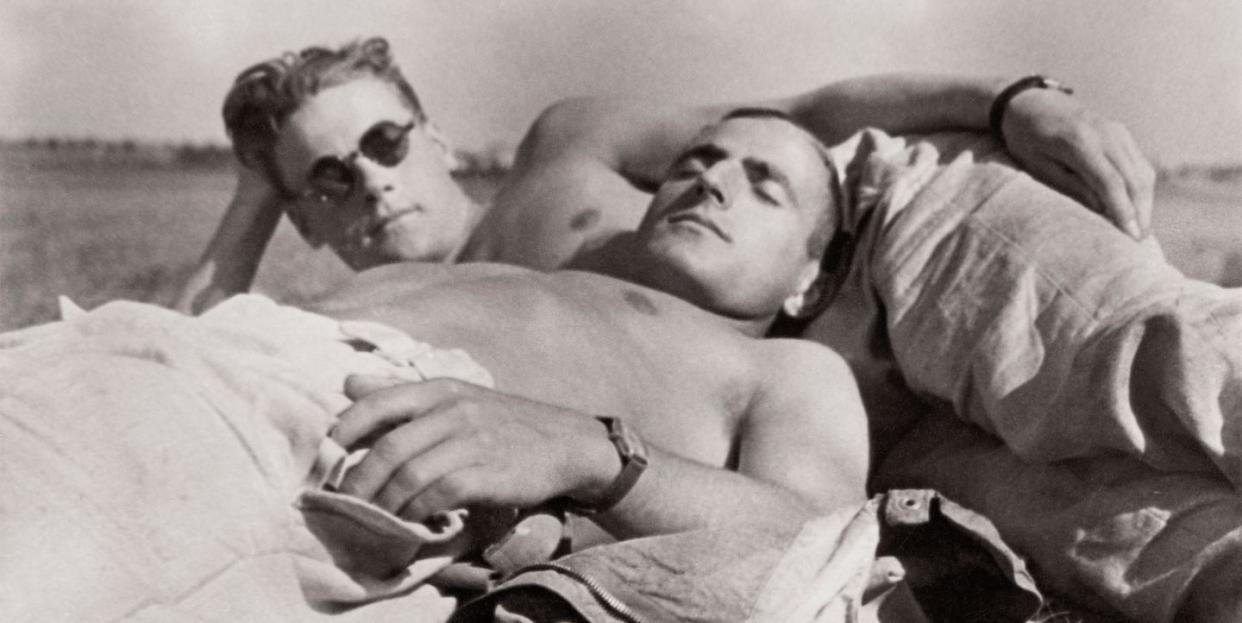
Two guys walk into a junk shop. It’s a lazy Sunday, after church, and they aren’t looking for anything in particular. Just looking. Past used armchairs, paintings, kitschy trinkets—and then one of them spots a small box of black-and-white photos, maybe 10 of them, old and faded, edges roughed-up. One picture stands out: two men, in front of a house, arms wrapped around each other. It’s got to be a hundred years old, but the look in their eyes? Timeless. And unambiguous.
When they stumbled across that photo, Neal Treadwell, who works in the cosmetics industry, and Hugh Nini, a teacher at the Joffrey Ballet, had been together eight years, and they recognized the look immediately. They snapped up the photo. And, in the 20 years since, they’ve snapped up nearly 3,000 vintage photos of men in love with men. Now they’re releasing Loving, a book of more than 300 pictures from their collection, dating from before the Civil War to just after WWII, that, in image after image, captures connections so deep—and radiates happiness so pure—it simply overtakes you.
To some, these are just old snapshots, or “found photos,” left behind by their owners for reasons unknown. But Treadwell and Nini refer to them as “unlikely survivors of a world that is only just beginning to catch up with them.” And paging through their book, it does feel like a small miracle that so many of these photos are here at all. How many could there have been to begin with? Perhaps the only thing that kept them safe was their owners’ wish to keep them secret, tucked away and spared from the hands of disapproving relatives and the scars of time and sunlight.
Here, Esquire selects a few favorites from Loving: A Photographic History of Men in Love, 1850s-1950s.
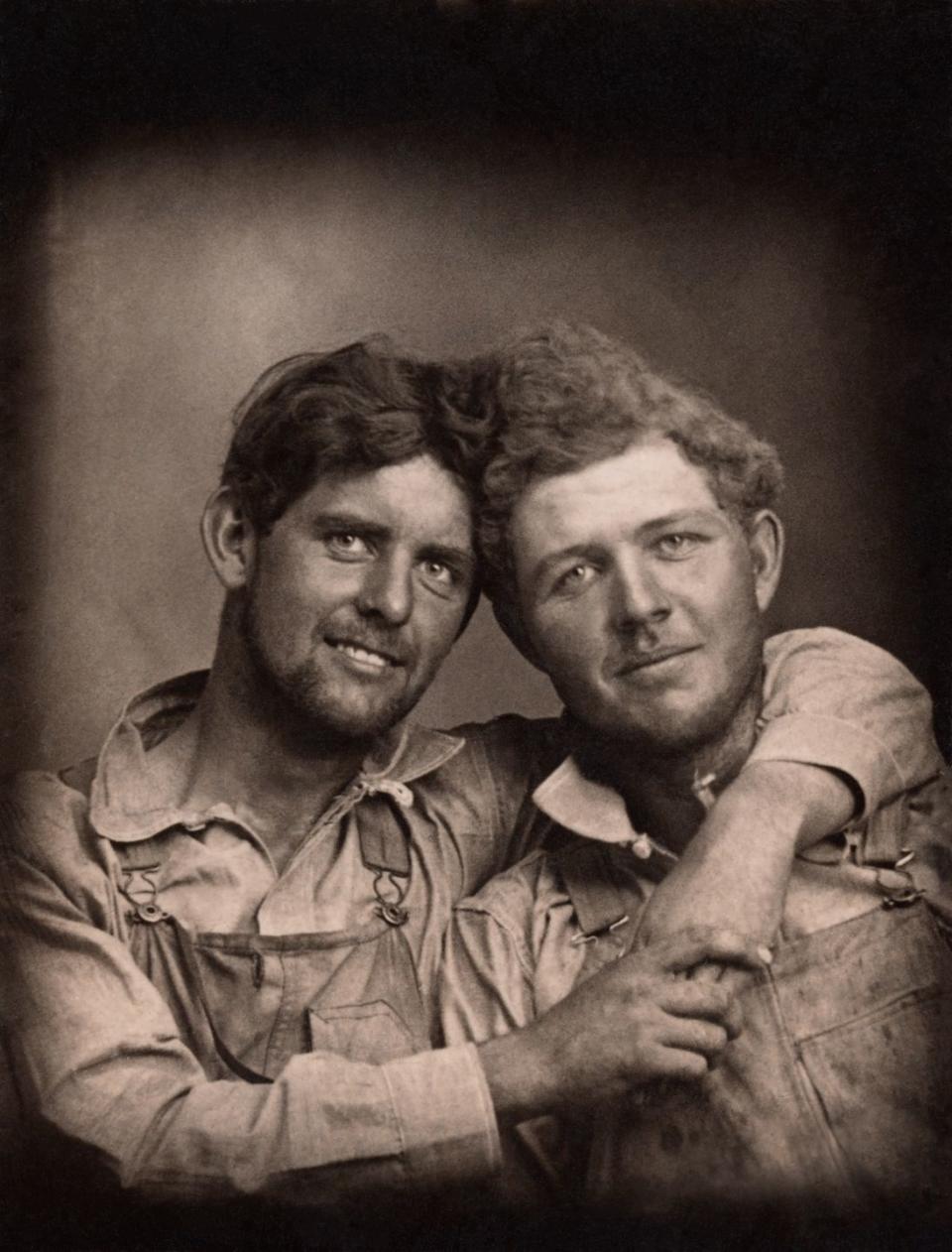
Where were these photos taken?
Many of the early images in the book were made by traveling photographers, who would pull up at a fair, a circus, or even a prayer meeting, and set up a studio tent. They often had a painted backdrop and a couple of props. Given the times, explains Nini, “There certainly was some element of risk for the men.” And yet, there were photographers—“and I'm sure the men knew who they were,” says Treadwell—that would photograph the men like any another couple, and help them pose in a certain way to let them express themselves. The image above is likely from between 1890 and 1910.

Sometimes an umbrella is not just an umbrella.
Flipping through the book, one thing you’ll notice, in addition to the fact that many of the pictures look like they could have been taken yesterday, is umbrellas. What’s that all about? It’s a visual code that, to those in the know, signifies romantic involvement. “We didn’t think anything of the first umbrella photo we found. We thought it was just an umbrella,” says Nini. “But then we kept seeing them. It’s a deliberately coded message.” Interestingly, it’s a message that crossed borders: Their collection includes umbrella shots from the U.S., Germany, Bulgaria, and Serbia. It also crossed the decades: “The earliest one we have is from the 1860s. And it goes all the way into the 1920s. It largely stops after that. No idea why.” This photo is probably from the 1910s.
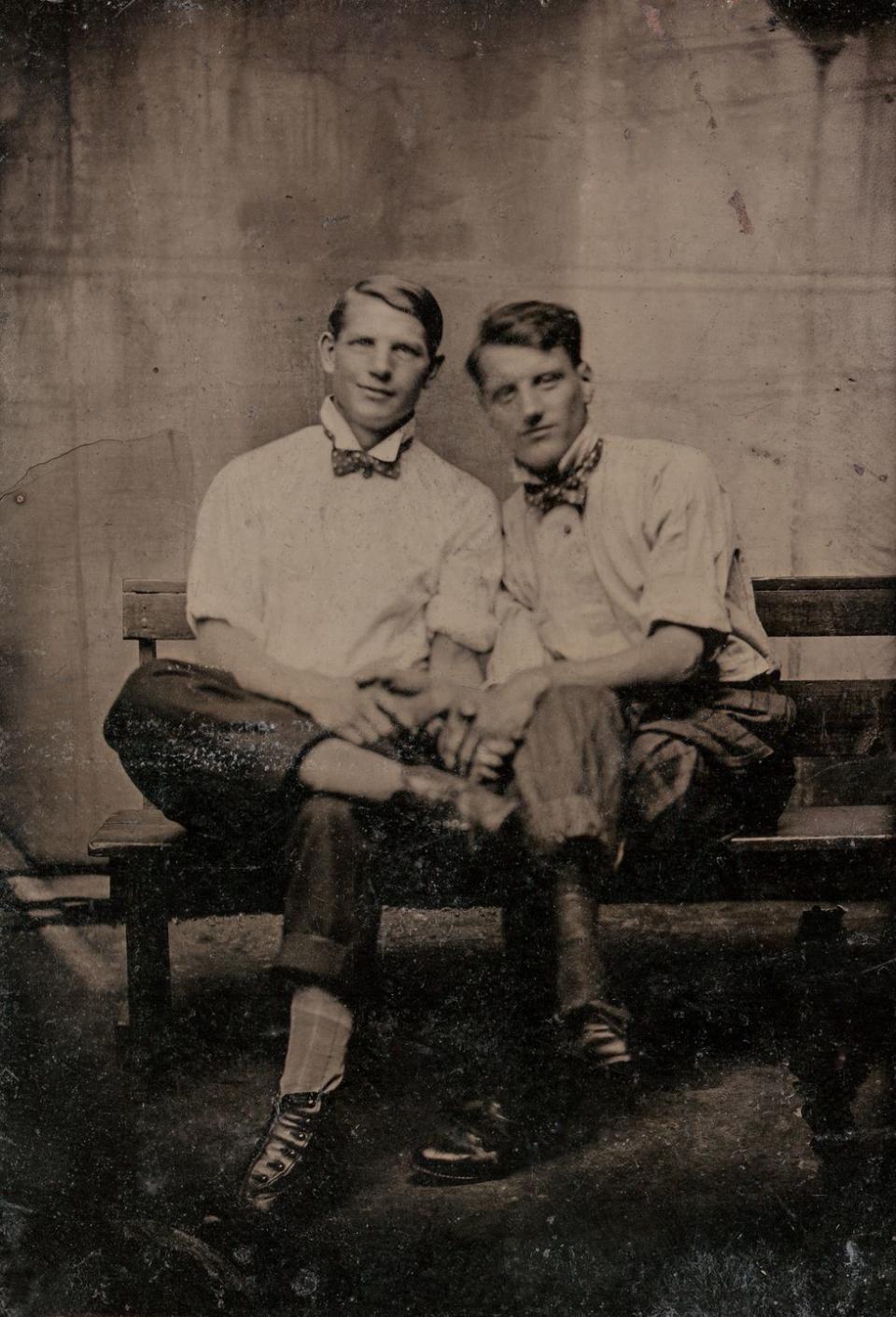
They dressed for the occasion.
A hundred years ago, getting your picture taken was a special occasion, one worth cleaning up for. What you see in Loving is men who look like they took the carriage to the photo studio after a day on Wall Street, as well as those who seem to have come straight from the fields, pausing, perhaps, to brush a bit of dirt from their overalls. Sometimes they even dressed alike, perhaps to emphasize their close connection—as in this picture from the late 1800s, where the men wore bow ties, popped their collars, and rolled up not only their sleeves but their pant cuffs. “You normally wouldn't see someone go to that extent to match perfectly,” says Treadwell. “They went the extra mile.”
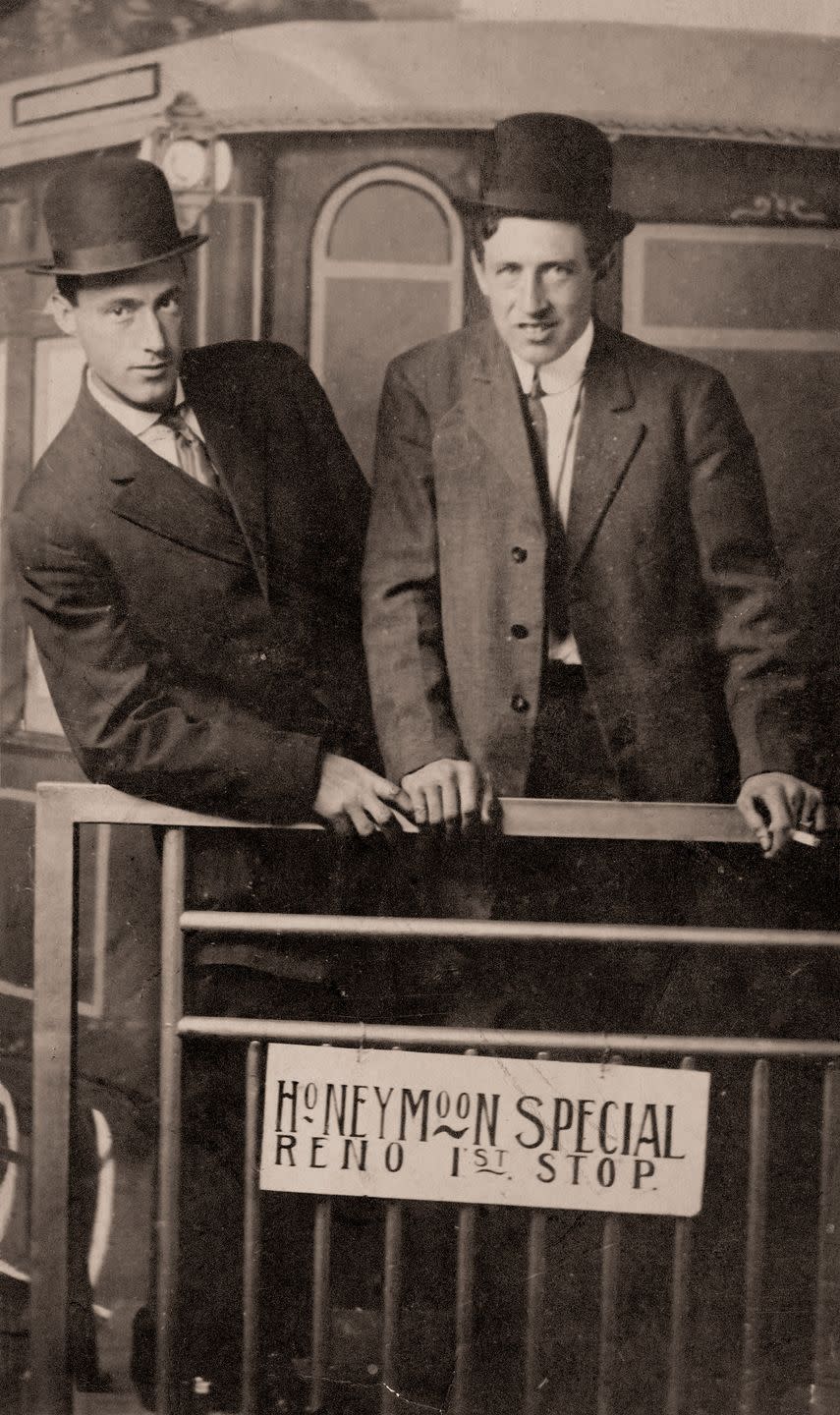
A little body language goes a long way.
How can you tell when two men are in love as opposed to close friends hanging out, well, closely? Treadwell and Nini operated on the you-know-it-when-you-see-it principle: the telltale look in their eyes. “There’s a softness that happens in the face and then the eyes,” says Nini. “There’s a sense of contentment.” Sometimes the glimmer wasn’t there but the body language told the story, as in this “Honeymoon Special” arcade-style image shot against a painted set. Here, the gents could have been mistaken for old friends, except for a solitary right index finger.
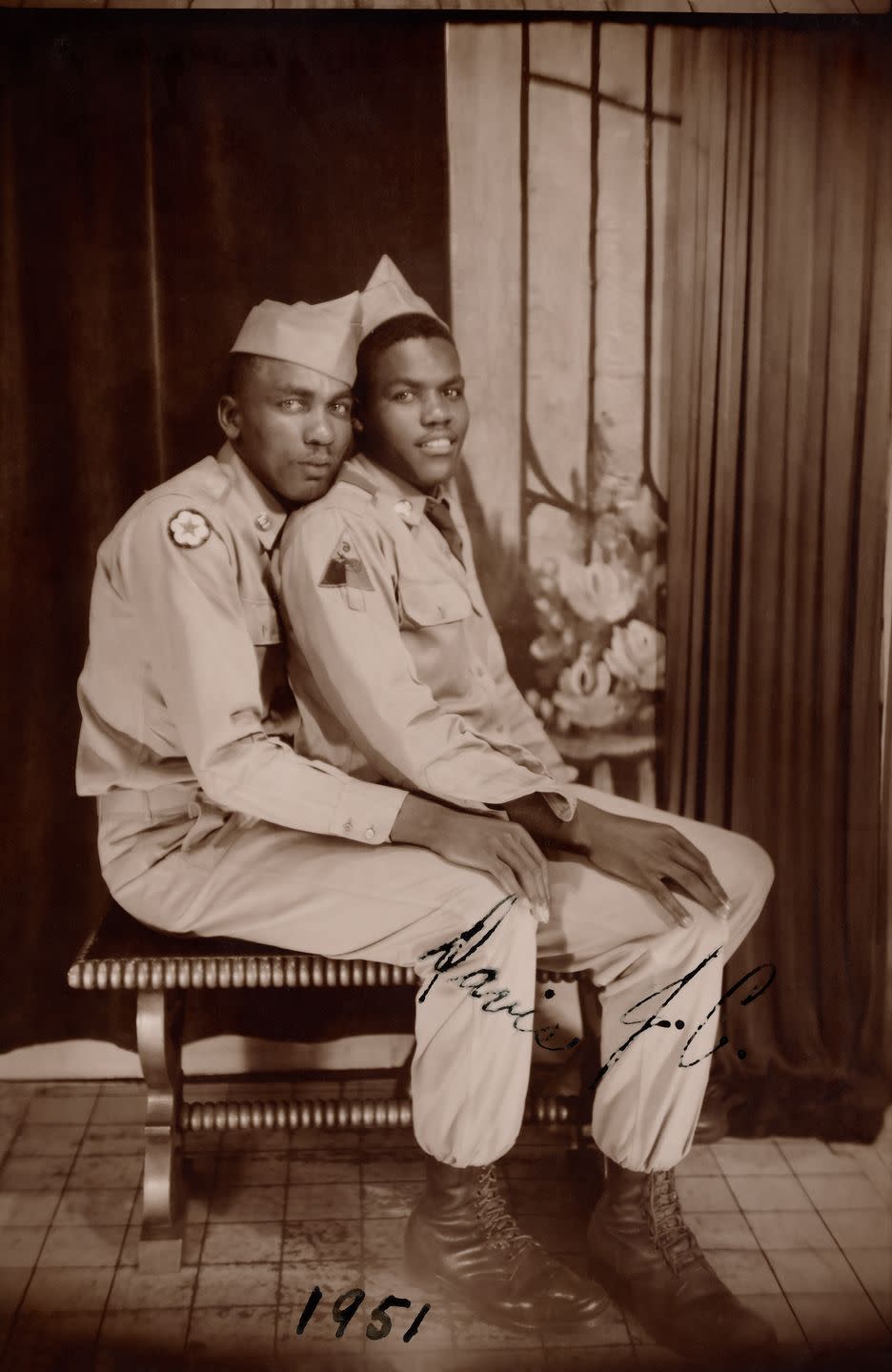
There was plenty of love during wartime.
“Military couples, from all over the world, make up a disproportionate number in our collection,” says Nini. As much as 20 percent. They have many photos of Army and Navy men from WWII, but also some going back to the Civil War. “It makes sense,” he says. “If you were a man who is destined to fall in love with another man, the military was a good place to be.” But this particular photo is a rarity in part because of all the information it offers—their names are written on the image, it’s dated—but also because the men are Black. “There are,” says Nini, “very few romantic African American photos.”

They were ready, willing, but not able.
Some pictures in Loving demonstrate gooey warmth. Some a deep tenderness. This one, from about 1905, displays uncommon bravery. Photographers kept props and signs on hand to lighten the mood, maybe generate a bit more business. This preprinted sign, says Nini, was typically reserved for a single guy coming in and announcing to the ladies that he’s in the market. But the young men here have cannily changed the sign’s meaning from advertisement to proclamation. Imagine being in your late teens, maybe early 20s, in this era, and making this kind of statement with this kind of confidence in your eye. “It’s just an astonishing display of clarity about what they meant to one another at such a young age,” says Nini. How do we know these young men were a couple? A companion photo features them holding an umbrella.
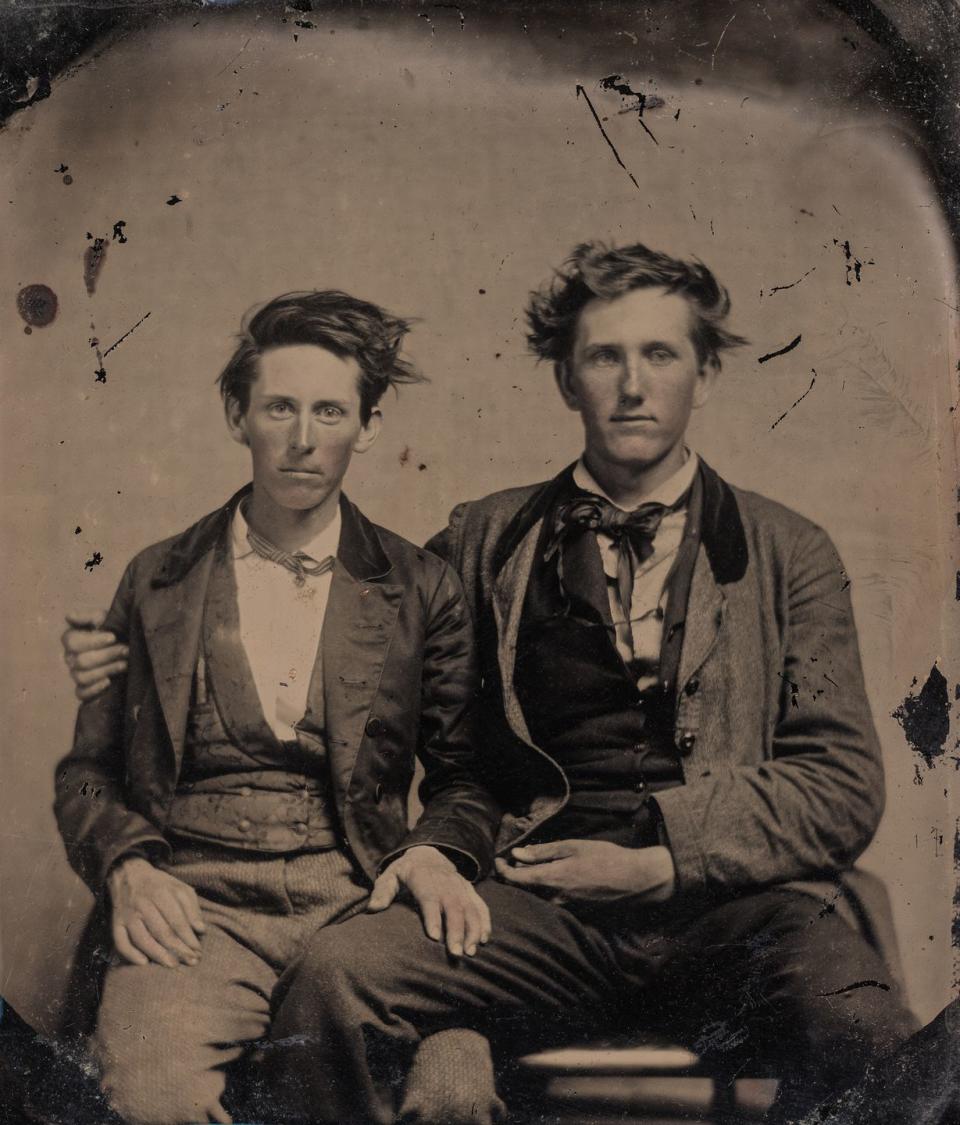
Celebrating love, ’60s-style
In 1860, Abraham Lincoln was elected president, the Pony Express began delivering mail, and this image was snapped. It’s the oldest in the book.
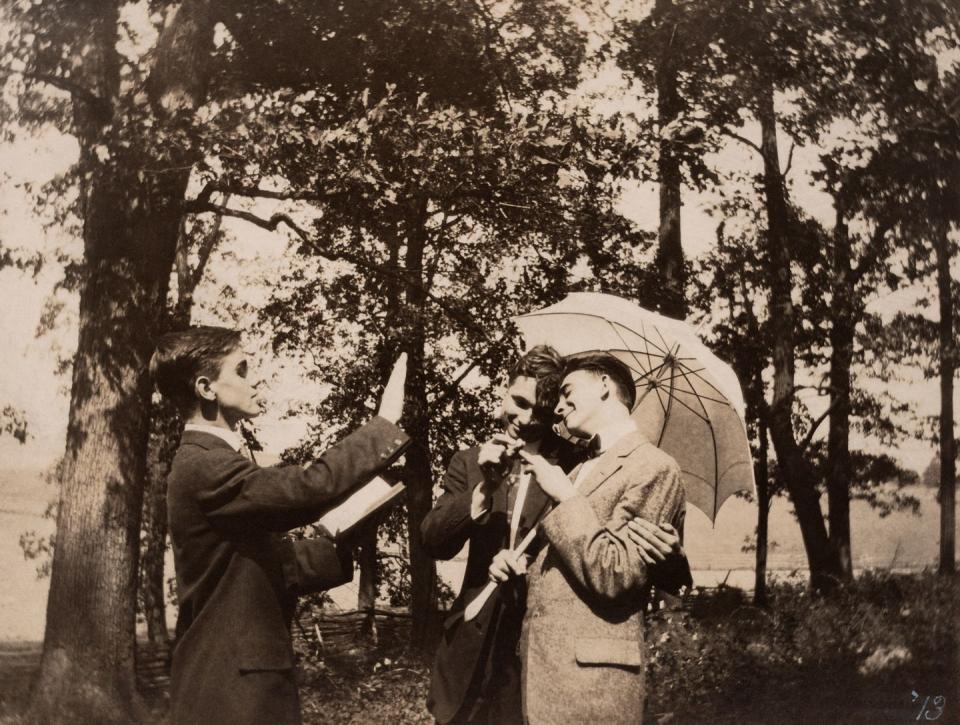
They document a hidden history.
Treadwell and Nini believe this photo—dated some 115 years before the Marriage Equality Act became law—may be the first documented marriage between two men. It’s all there: The “minister,” the ring, the bible, and, of course, the umbrella. The photographer serves as the witness. This photograph, says Treadwell, “is especially important to us because it says that Hugh and I, and the way we feel about each other, isn’t anything new. We can document these feelings and dreams going back to the beginning of photography.”
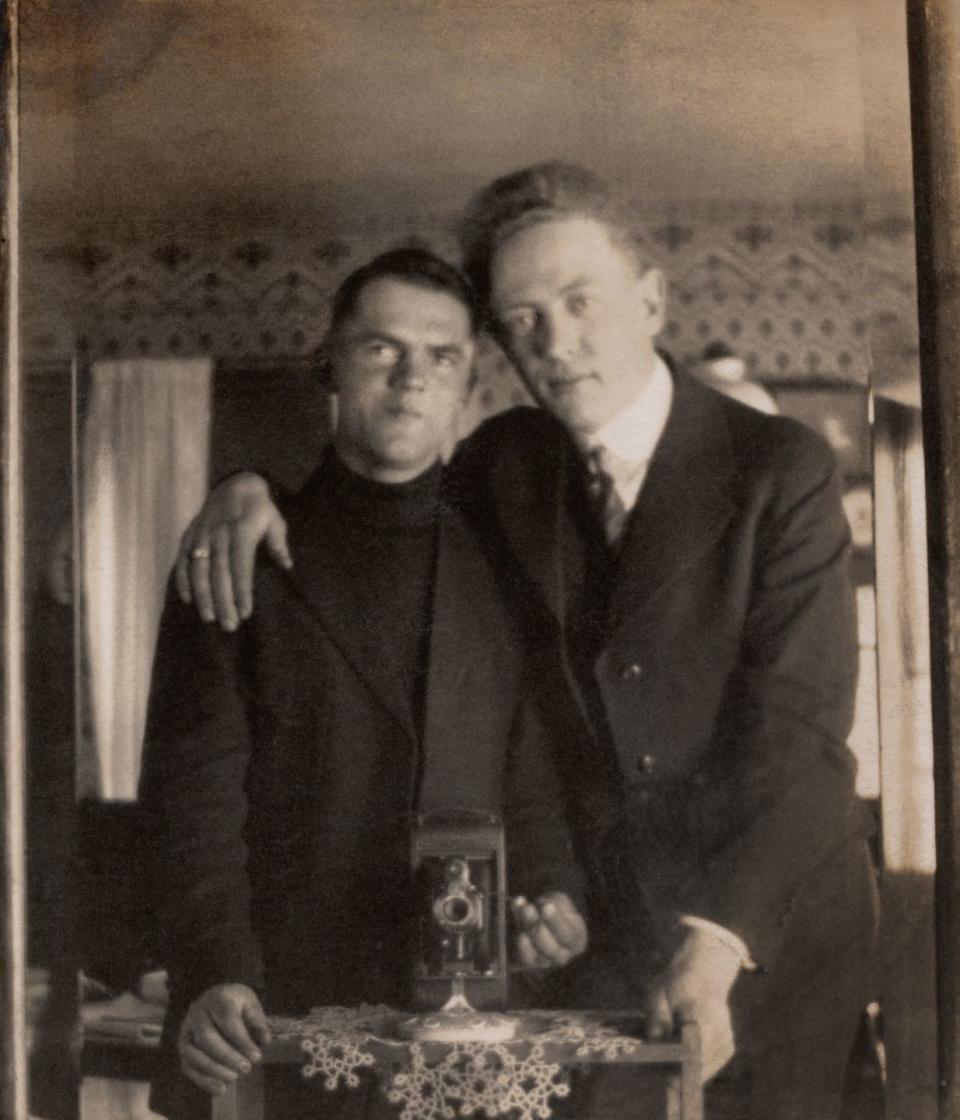
It was a time of reflection.
While the love between two men might have been secret, memorializing it in a picture required someone to actually take the picture. There was some risk to that, and the first modern photo booth, with its promise of privacy, didn’t pop up until 1925. Which is why this image is special. Treadwell and Nini call it “perhaps the first selfie of a romantic male couple.” Posing in front of a mirror, the men use an automatic shutter trip; you can see the squeeze-ball that triggers the shutter. Nini believes this may be the Faries Shutter Tripper, patented by Robert Faries in1902.
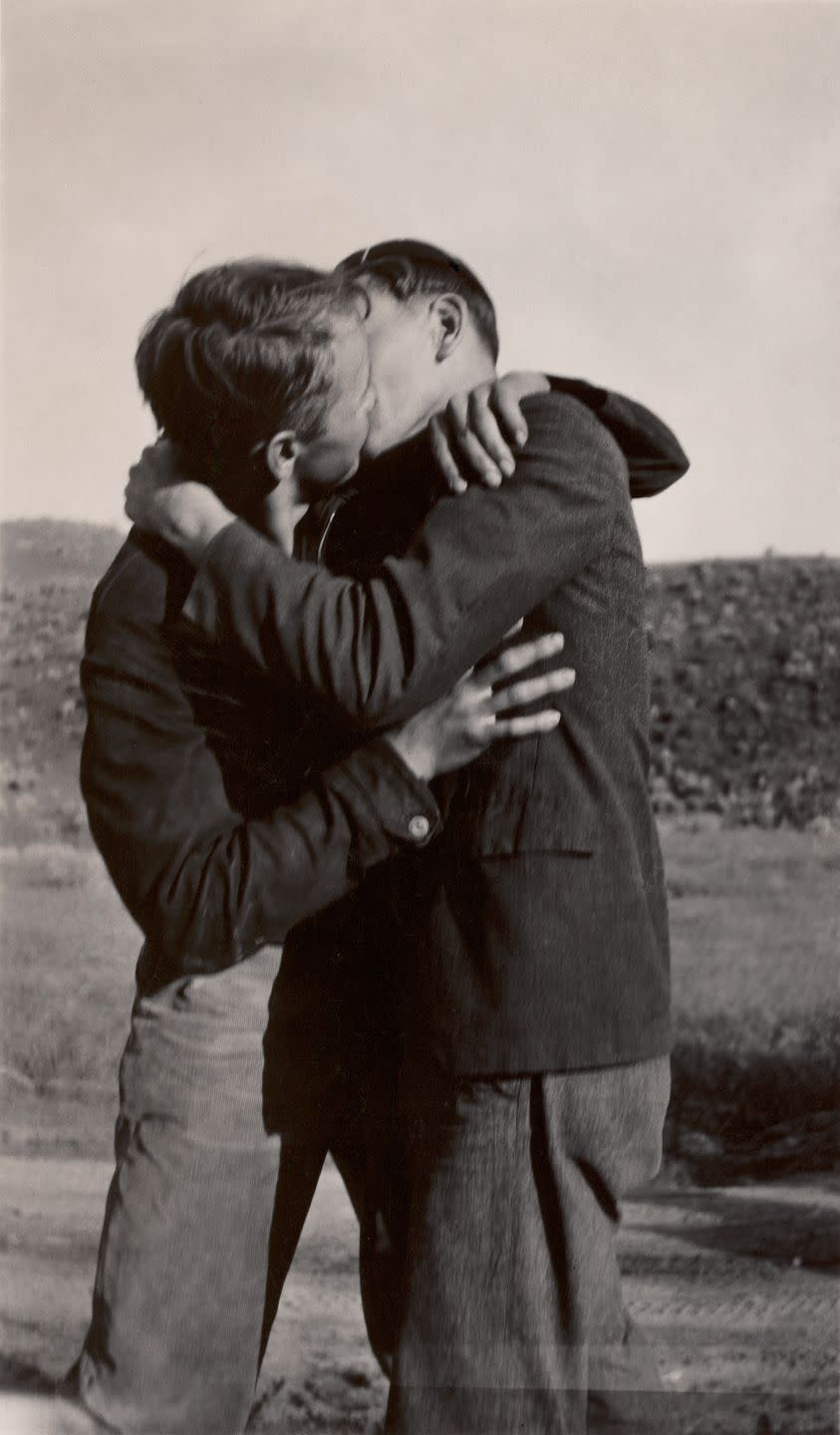
Does love last?
The couples in these pictures: What happened to them? “Some probably made it,” says Nini. “Some probably didn’t.” We can never know what happened outside of the frame, those moments of romance, of courage, defiance, and heartbreak that make up a life. What we know is that, at least in that split-second blink of the camera’s eye, there was a moment that sure looked like love.
You Might Also Like


